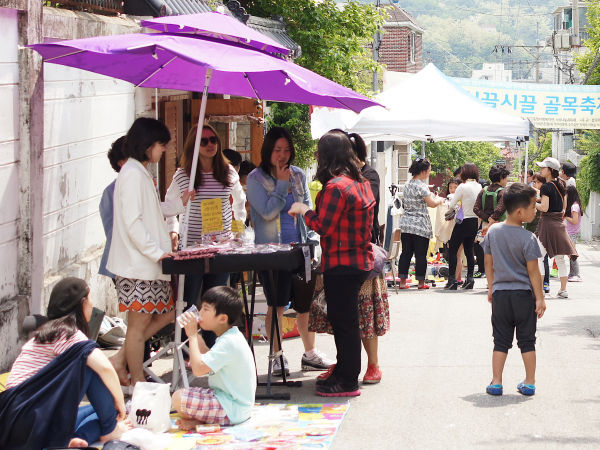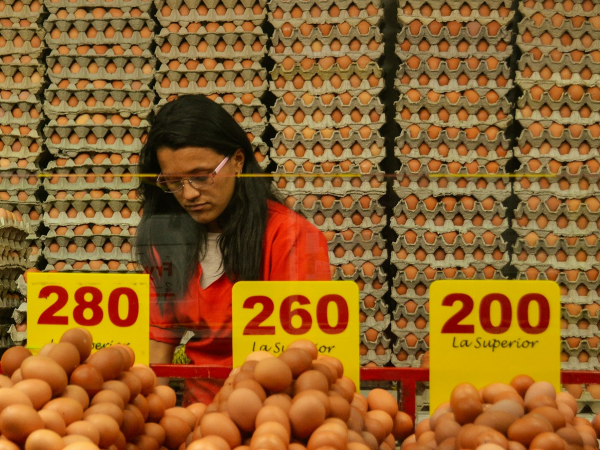The RISC's first Cohesion Report investigates how the homogeneity of social networks affects societal cohesion in Germany. The analyses are based on newly available data from the German Social Cohesion Panel (SCP).
"Sometimes I feel like I'm living in a bubble" - quite a few people in Germany would probably agree with this statement. The tendency for social groups to keep to themselves is by no means new or problematic. In light of increasing and polarizing social conflicts, however, the questions arise: Is there a social segregation in Germany? Do social groups “live in different worlds”?
The first Cohesion Report produced by the Research Institute Social Cohesion (RISC) addresses these questions by examining social networks in Germany. We survey the composition of respondents’ circle of acquaintances with regard to eight selected dyads of political, socio-economic, cultural and regional characteristics (e.g. rich and poor). We speak of a ‘homogeneous social network’ when we can find one characteristic that is predominantly present in a circle of acquaintances, while the opposite characteristic occurs rarely or not at all.
The analyses draw on data from the first wave of the German Social Cohesion Panel (SCP) 2021. The SCP is an annual longitudinal study representative of Germany conducted by the RISC in cooperation with the German Socio-Economic Panel (SOEP). Besides innovative survey instruments measuring the composition of social networks, the questionnaire covers various aspects of social and societal cohesion. The report relies on information from over 12,000 respondents.
Reasons and intensity of network segregation
The prevalence of homogeneous networks depends fundamentally on the frequency of a characteristic in the population. Based on the frequency, we can calculate to what extent homogeneous networks would occur if people made acquaintances randomly. If observed homogeneous networks exceed their expected frequency by large, we speak of ‘network segregation’.
Network segregation can be the result of social and spatial inequalities that determine opportunities for everyday social encounters between social groups, for example in neighborhoods, clubs, schools, or the work environment. Moreover, social boundaries between groups play a role, ranging from unconscious and latent distancing to open hostility and rejection. Furthermore, people have a tendency towards ‘homophily’, i.e. a preference for people who are similar to them.
Social network composition and political attitudes in Germany
The composition of social networks by individual and network characteristics is displayed in Figure 1. In comparison to other group characteristics, we find a particularly strong tendency to ‘stay among themselves’ among sympathizers of the Green party and the AfD: 50% of potential AfD voters report that their circle of acquaintances predominantly consist of AfD sympathizers; among potential Green party voters, 62% have homogeneous ‘green’ networks. However, it must be noted that our study does not cover network composition with respect to sympathizers of other parties, and instead is limited to the Green party and the AfD, which represent the two ideological poles of the German political spectrum. We cannot rule out that voters of other parties have politically homogenous networks with sympathizers of their affiliated parties, too.
Furthermore, a tendency towards network segregation is pronounced among people of Muslim faith, people with lower education, and people from rural areas, as well as among Eastern Germans, the rich, and the highly educated. In fact, there are only a few observed characteristics with only a slight tendency towards network segregation (such as the poor, Christians, and people with German citizenship), while we find no segregation at all for Western Germans and people with a migrant background.
.png)
Figure 1: Composition of social networks by network- and individual characteristics in percentage (weighted)
What are the effects of network homogeneity?
In our report, we delve deeper into the relationship between network homogeneity and four relevant aspects of societal cohesion:
- Values, or the ideals of living together in a society, including opposing views such as universalist or traditionalist values
- Political attitudes, such as trust in democratic institutions, satisfaction with democracy, or support for populism
- Experiences of cohesion, conflict, and devaluation in the family, neighborhood, and work
- Emotions towards social groups, also known as ‘affective polarization’
The most evident effects can be found when we look at the political composition of social networks. People whose acquaintances are predominantly close to the Green party are a mirror image of people whose acquaintances are predominantly close to the AfD in most of the aspects examined, e.g. people with homogeneous Green-affiliated networks are more trusting and people with homogeneous AfD-affiliated networks less trusting in political institutions than the rest of the population.
While this polarity applies to fundamental values and political attitudes, it is hardly the case for everyday experiences of cohesion, conflict, and devaluation. Furthermore, there is a pronounced affective polarization between people close to the Green party and people close to the AfD: both have very positive feelings for their own group, but very negative feelings for the other. Considering that there is a strong tendency to network segregation in both groups, this indicates a pronounced disconnection of social networks with potentially reinforcing effects for the respective world views – a “living in different worlds”.
Socio-economic network characteristics are of key importance for societal cohesion. They prove to be highly relevant for everyday experiences of cohesion. In the work sphere and in the neighborhood, people with predominantly poor networks experience less cohesion and more devaluation than people with predominantly rich networks. Accordingly, people with poor networks prefer a greater sense of community in the family and neighborhood, while people with rich networks prefer individual independence. Furthermore, people with rich networks tend to have traditionalist values, whereas people with poor networks do so less. Contrarily, people with poor or poorly educated networks have a greater tendency towards populist orientations, while this is less pronounced among people with rich or highly educated networks. Socio-economic network characteristics also further an affective polarization along socio-economic divides: people with predominantly poor or predominantly rich acquaintances both make stronger emotional distinctions between rich and poor people than the rest of the population. The same holds for networks predominantly consisting of people with a low or high level of education: they both have more positive feelings towards their own group and more negative feelings for the other.
The cultural composition of social networks is only partly influential. People with predominantly Christian networks show more trust in government and public media as well as a higher satisfaction with democracy while the opposite is true for people with predominantly Muslim networks. Moreover, people with Christian networks experience more cohesion in the family, which is lower among people with Muslim networks. Regarding emotions, among cultural groups (for example, Christian vs. Muslim, German vs. migrant) we find positive feelings for the own group, but no distinctly negative feelings towards the other.
We also find that the regional composition of one’s network affects aspects of societal cohesion, primarily when looking at fundamental values. For example, people with predominantly rural networks have community-oriented ideals of living together, more traditionalist values, and less universalist values. The opposite is true for people with predominantly urban networks. However, we find no clear tendency towards an affective polarization for rural and urban residents. In contrast, Eastern and Western Germans have more positive feelings towards their own group, but no pronounced negative feelings towards the other.
Do social groups in Germany “live in different worlds”?
German society is far from being divided into completely separate networks or ‘bubbles’. Nevertheless, our report shows a clear tendency towards segregation for most of the social network characteristics examined, and we find a strong link between network homogeneity and cohesion-related values, attitudes and experiences, taking into account important individual socio-demographic characteristics. If so, the experience of “living in different worlds” can be most likelydiagnosed among supporters of the Green party and the AfD, who have opposing attitudes and values as well as hostile feelings towards each other.
This article presents the results of the First Cohesion Report of the Research Institute Social Cohesion (RISC),
coauthored by Nils Teichler, Jean-Yves Gerlitz, Carina Cornesse, Clara Dilger, Olaf Groh-Samberg,
Holger Lengfeld, Eric Nissen, Jost Reinecke, Stephan Skolarski, Richard Traunmüller,
and Lena Verneuer-Emre. The report can be accessed (in German) at the FGZ Website.
Header photo by Brooke Cagle - Unsplash









